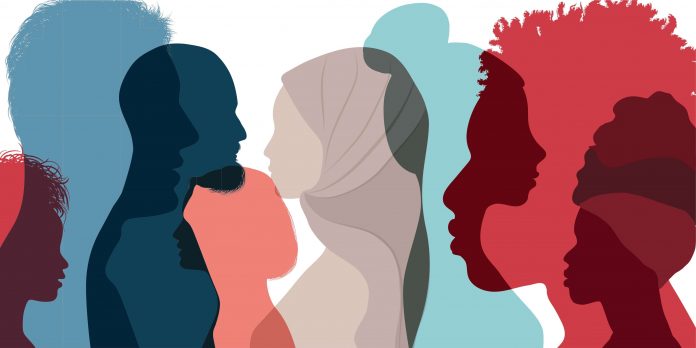
An organization’s diversity, equity, and inclusion (DEI) journey starts with diversity. When diving into strategies for improving diversity in the workforce, the first question under consideration is the significance and necessity of having a workforce that is entirely homogenous. Once a company has a diverse pool of talent, the focus shifts toward ensuring all employees feel included and that the dominant culture does not leave marginalized employees feeling isolated. The utopic space that all organizations should aspire to is one of equity, where the systemic barriers to marginalized employees thriving in the workplace are removed.
Tokenism is the act of making a performative effort to display inclusive behavior. This often shows up in organizations when individuals from marginalized backgrounds are highlighted in public events, photos, or speaking opportunities in an attempt to demonstrate diversity. This is tokenistic because these workplaces are often not very diverse but wish to appear so as this is now seen to be good business practice. It is also a form of tokenism to have a diverse workforce that is structured in such a way that power always remains with the dominant group.
How the Employee Feels
“I was the only one in the room” has been said by many people from under-represented groups. This can lead to performance pressure and being fearful not to reinforce negative stereotypes from their group. For example, a Black woman at her workplace may be hesitant to turn down photo or speaking opportunities, concerned that this feeds the perception of Black women as “difficult.” For people from marginalized backgrounds, their lack of representation in corporate spaces means they often are perceived as a monolith.
Tokenization does not work in anyone’s favor, as the person being tokenized often feels simultaneously undervalued and overexposed. The burden of being the person constantly asked to be a representative and/or being the single person from a marginalized group in the C-suite is a heavy one to carry. This emotional labor can be exhausting and impact the mental health of employees.
It also can leave employees feeling as though they are only there to make up the diversity numbers, which can impact their confidence and ability to do their job. Individuals also may feel as though they are cornered into “opportunities” that put them in a moral dilemma of whether to play along or push back—thus diminishing the space for psychological safety.
In the aftermath of the murder of George Floyd, many organizations have been held to account and decided to rectify their homogenous C-suite by creating a new role: the chief diversity officer. While it is a positive move, and having a person dedicated to heading DEI in an organization means that it will no longer be placed on the back burner, many companies are hiring Black candidates to fill this position. But although this is important work, Black talent stretches beyond diversity roles. Many companies are placing Black executives in positions with unclear responsibilities and short-term timelines to “create” inclusion. Firms that preach diversity at every level of their organization must be mindful if they are only making space for C-level diversity in the role of a chief diversity officer.
The Role Organizations Play
Not only is it important to reflect upon the experiences of the employee, it is also pertinent to note what organizations are missing out on. Tokenism causes harm. There is a real opportunity in growing diversity and building staff retention within organizations to offer marginalized people space to show up at work feeling safe and included. However, when diversity means tokenism without equity or inclusion, those same marginalized people will be showing up to work unsafe and isolated. Although often unintentional, the harm caused is still real for those experiencing it.
Tips to Help Training Leaders Avoid Tokenism Within Their Organizations
- Focus on an authentic DEI strategy to ensure that there is a genuine and realistic pathway to diversify the organization. An absence of this can seem like a desperate scramble to hire the first working-class or LGBTQIA+ person who applies for the chief diversity officer post, for example.
- Measure the impact of diversity, not just the number. Who are your decision- makers? The board may have 30 percent women, but are their voices heard so they have the space to effect change? There may be 40 percent people of color in your organization, but are they mainly in entry-level positions, having little impact on policy?
- Organizations must intentionally look inward and keep the direct channels with marginalized employees open to cultivate trust and a safe space. Learning professionals should encourage listening projects and not simply focus on training that provides a list of dos and don’ts. This will enable them to call out and call in less-than-inclusive behavior, as needed. Tokenism is performative and focused on perception from outside the business—redirect your focus.
- Who is in the photo? While there is often a need to use stock photography, it is important to ask whether those images are a true reflection of your workforce. When there is an opportunity to showcase the team, do not recycle the same faces but rather think about what an authentic reflection of your staff team looks like. For example, an organization that has a majority white team sending out an invitation to DEI training with a photo that has a team made entirely of people of color comes across as disingenuous.
- Inclusion is everyone’s responsibility. Learning professionals must ensure that this narrative runs through their organizations with clear messaging. From empowering ALL employees with the necessary embedded training to ensuring that leaders lead by example, Training professionals can support the employee population with knowledge and space to establish a workplace where under-represented groups are not tokenized.


